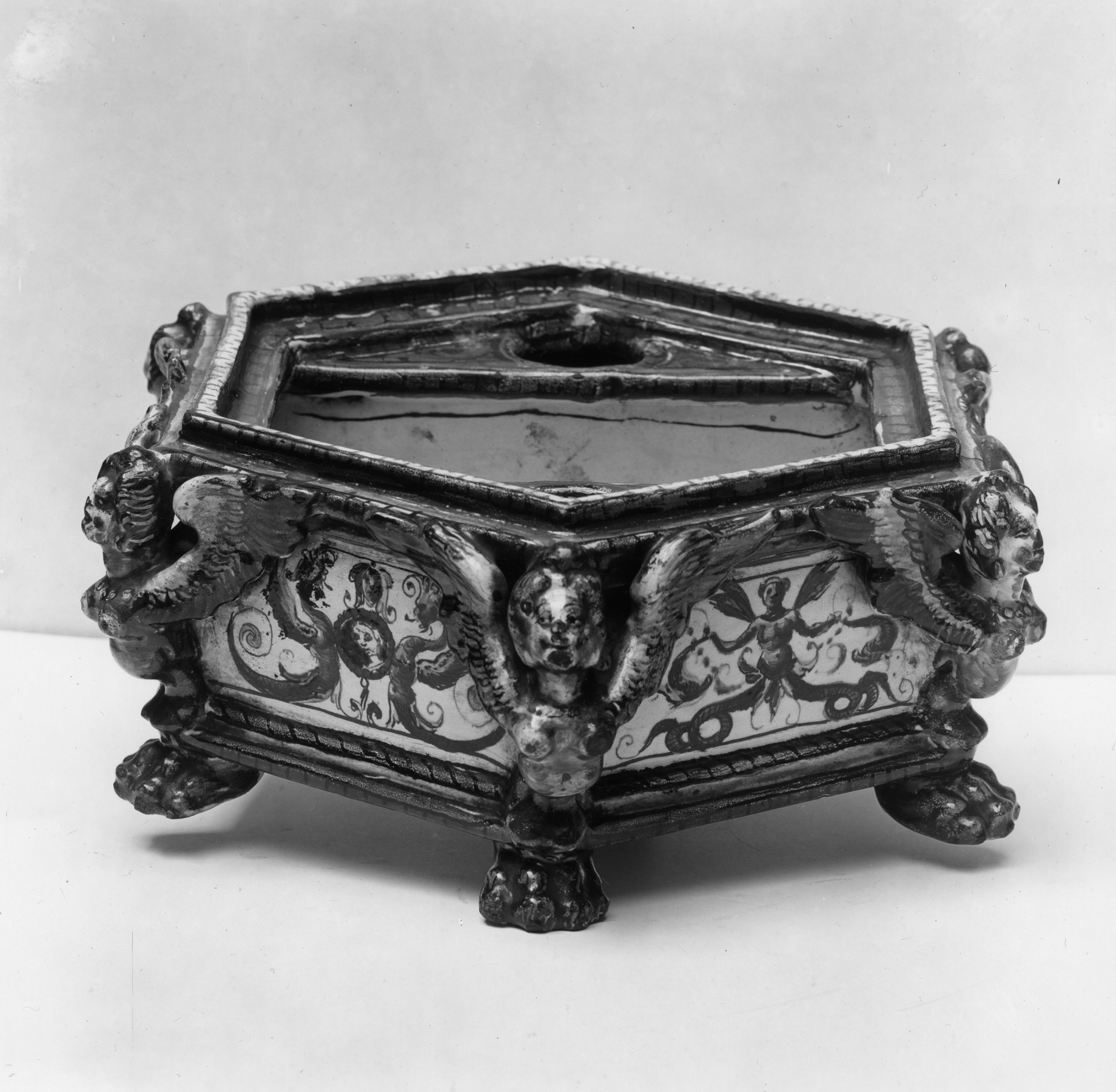Inkstand
(Baroque Europe )
The flamboyance of this inkstand reflects the growing taste for flamboyance generally in the arts of Italy around 1600. In the 1400s, ink holders and trays for pens were typically simple and often made of pressed leather. By the early 1500s in northern Italy a hand-size bronze inkwell might be designed in the whimsical shape of a satyr or some other mythical creature to satisfy an educated owner’s interest in classical antiquity. The taste for large, imposing inkstands in glazed earthenware, decorated with generic classical motifs, developed in the later 1500s, suggests the desk as a site for show as much as for work. The color scheme of the decoration in blue, copper-green, yellow, ochre, and manganese and set against a white background is typical for works from Urbino and specifically the Patanazzi family workshop. The primary decorative motif defining each corner is a harpy, a female demon described in Greco-Roman mythology as a beautiful woman above the waist and below, a serpent, the latter reflecting her evil nature. So the decoration would subtly support misogynist attitudes in the owner, surely a man. The interior of the inkstand is divided into three compartments. The central rectangular compartment is painted in grey outline, with depictions of writing implements kept there: quills for pens, a “penknife” to cut them at the right angle, and scissors to cut the paper. The triangular compartments with a circular opening on the side would have held ink and sand, the latter to be poured over the wet ink to dry it more quickly.
In the last quarter of the sixteenth century, inkstands decorated with grotesques were one of the specialties of Urbino workshops. The Patanazzi family—one of the most prominent maiolica workshops in Urbino—was likely the main producer. To see more works by the Patanazzi family workshop, click on the name in the creator field; for more information on ‘maiolica’ in general, see 48.1336.
Provenance
Provenance (from the French provenir, 'to come from/forth') is the chronology of the ownership, custody, or location of a historical object. Learn more about provenance at the Walters.
Seligmann [date and mode of acquisition unknown]; Henry Walters, Baltimore, May 11,1908, by purchase; Walters Art Museum, 1931, by bequest.
Geographies
Italy, Urbino (Place of Origin)
Measurements
H: 4 15/16 x W: 12 15/16 in. (12.5 x 32.8 cm)
Credit Line
Acquired by Henry Walters, 1908
Location in Museum
Not on view
Accession Number
In libraries, galleries, museums, and archives, an accession number is a unique identifier assigned to each object in the collection.
In libraries, galleries, museums, and archives, an accession number is a unique identifier assigned to each object in the collection.
48.1335


